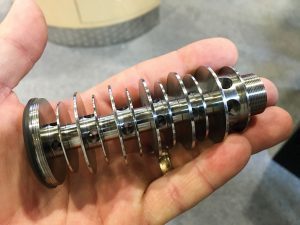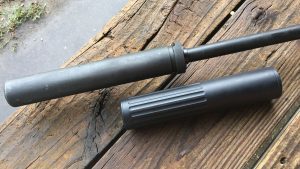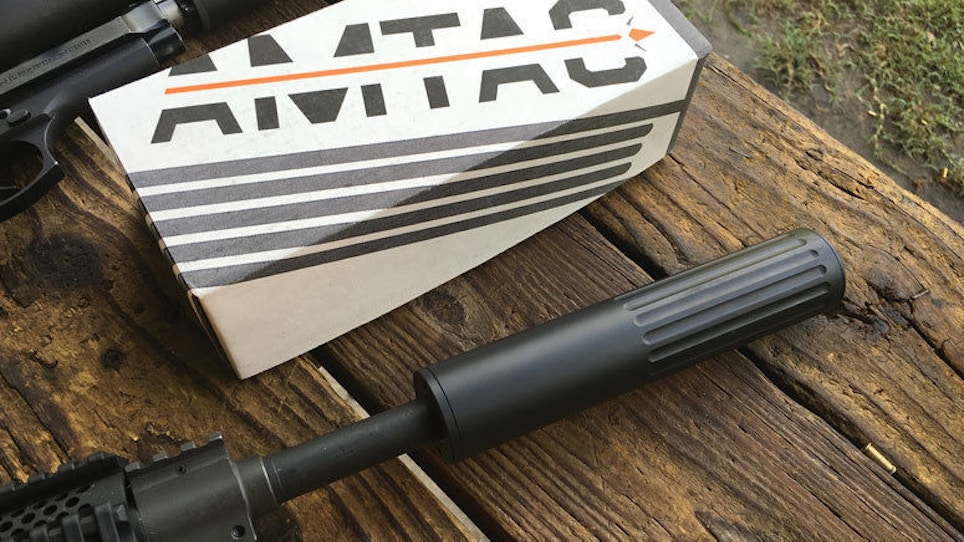As I write this, optimism abounds about the passage of the Hearing Protection Act, which will spell the end of onerous and unnecessary regulations suppressing the silencer market. By the time you read this, the next Congress will be in session, and we’ll have a much clearer picture of if and when this legislation might be passed and signed into law. Here’s how the bill reads as of now: “A person acquiring or possessing a firearm silencer in accordance with Chapter 44 of title 18, United States Code, shall be treated as meeting any registration and licensing requirements of the National Firearms Act (as in effect on the day before the date of the enactment of this subsection) with respect to such silencer.” In plain English, that means that silencers are no longer bound by the restrictions of the NFA. In even plainer English, that means you could go into a store, buy one and take it home.
For retailers, this will be a big opportunity. Every customer who already owns a pistol, rifle or even shotgun is a prospective customer for significant upgrades. Sure, we can expect a significant inventory shortage from the first buying wave, but we can also expect lots of new manufacturers to enter the market with innovative silencer offerings.
That brings us to one such nifty product from a newer player in the silencer market — AMTAC Suppressors. The company is not new to precision manufacturing; they’ve been machining high-tech components for 35 years for customers such as the Department of Defense, Northrup Grumman and SpaceX. I refer to their product as “nifty” because they’re taking a different approach to the feature, function and benefits matrix. The company’s stated goal is to make suppressors that are hearing-safe, meaning under 140dB, but as short and compact as possible. In their view, much of the benefit of a short barrel carbine is lost when you stick a heavy, nine-inch suppressor on the fiery end.

The baffle system is milled from a single piece of stainless steel to minimize variance. The idea is to virtually eliminate change in point of impact when adding or reinstalling the suppressor.
Most suppressors made by AMTAC are over-barrel models. Traditional suppressors have tubes and interior baffle components that start at the muzzle. As gas exits the muzzle, it enters a blast chamber and proceeds to swirl its way through a series of baffles before finally exiting the front of the suppressor at lower temperature and pressure. With the AMTAC over-barrel design, there is still a generous blast chamber forward of the muzzle, followed by a series of baffles, although the length of the baffle segment is much shorter. What’s dramatically different is that the suppressor installs over the barrel, with nearly two-thirds of its body behind the muzzle. You might think of this hollow section as a reservoir of extra interior volume for hot gas. Instead of putting the “volume” in front of the muzzle, it’s placed behind.
As with a traditional can, the gas enters the blast chamber and moves through the baffles before exiting the hole in the front of the silencer. However, some of the interior gas pressure is bled off backward into the over-barrel portion of the suppressor body. This extra space helps reduce sound a little, but its big claim to fame is that it dramatically reduces gas and powder blowback into the action. If you’re one to thrive on those “suppressor facials” of gas and grit, you’ll be disappointed. There’s a lot less filth hitting you in the face when you shoot with the AMTAC CQB.
The over-barrel section is segregated from the exterior of the barrel by an interior tube sized to slide snugly over the barrel. This way, none of that nasty gas and grime ever comes into contact with the portion of the barrel covered by the CQB. Think of the system as a tube within a tube. The space between them is the gas expansion chamber. This interior tube is sized just a few thousandths wider than a typical AR-type barrel, right at 0.760 inches. In fact, the company chose standard gas block hole diameter in hopes of achieving the broadest possible barrel compatibility. The SNIPER Series AMTAC model is designed for larger diameter barrels. It features a 0.960-inch over barrel tube.
The CQB has a direct-thread mount only, by design. The company wanted to ensure minimum point of impact shift and decided to eliminate potential sources of mount imperfection that come with a quick-attach/detach mounting system. Additionally, they found that most users who buy a suppressor rarely shoot the host gun unsuppressed. Even still, this particular direct-thread mount goes on just about as quickly as silencers with quick-attach systems. That interior tube also serves as a guide that lines up the suppressor and barrel threads. Just throw the CQB over the barrel and start spinning. It’s virtually impossible to cross thread this setup, and it mounts in seconds.
AMTAC suppressor interiors are almost entirely machined from a single block of 17-4 PH stainless steel. As AMTAC’s corporate roots are in precision, not welding, you’ll not find a single structural weld in the entire assembly, although there is one tack weld in there. Instead, threading is used to attach components. This approach, combined with the serialization of the outer tube, allows the company to repair the interior in the event of a baffle strike without the need for additional ATF paperwork.

The AMTAC CQB-762 is shown here next to a SilencerCo Specwar 762 for comparison. The CQB is placed in the approximate position where it would be installed so you can see the dramatic overall length impact of the over-barrel design.
I compared the AMTAC CQB side by side with a SilencerCo Specwar 762 using a Rock River Arms LAR-68 rifle as the host platform. I also tried it with a Daniel Defense DDM4v5 .300 Blackout rifle using both subsonic and supersonic ammunition. At first glance, the dimensions are similar. The Specwar is nine inches long, and the CQB measures 9.7 inches. The CQB is a little thicker with a 1.62-inch diameter compared to the Specwar’s 1.5 inches, but the CQB is lighter, weighing in at 20.5 ounces compared to 24 for the Specwar. The real difference between these two silencers becomes apparent when you mount them. The Specwar extends a solid 8.5 inches past the muzzle, but due to the over-barrel design of the CQB, it only adds 3.7 inches — the rest of the suppressor covers the front six inches of the barrel.
Before firing the first shot, I noticed a big difference in feel and handling. The over-barrel design not only shortens the overall rifle package, it redistributes the weight as well. A good chunk of the one and a quarter-pound weight is behind the muzzle, so the rifle handles similarly to a non-suppressed configuration. Not having a weight extending from the muzzle was a huge handling benefit.
When shooting both rifles, the sound of the CQB was louder, at least to my naked ear, then that of the Specwar configuration. That was expected as the factory claims a 17-22dB sound pressure reduction for the CQB-762 model. While the tone created was more of a pop than a whoosh like with the Specwar, it was still pleasant to shoot with 6.8 Remington SPC and .300 Blackout 125-grain supersonic ammo from the two test rifles. As for loudness, that’s a strange and largely subjective thing. Decibel ratings of suppressors indicate “intensity,” while your ear hears “loudness.” A big difference in decibels may not be detectable to the ear in terms of “loudness.” Subjectively speaking, I’d happily accept the smaller size and better handling in return for the slightly louder performance that I observed.
The CQB comes in two flavors, a CQB-556 and the CQB-762 model shown here. AMTAC also offers the CQBm model in both calibers. This lighter configuration is designed for shorter rifles and has a four-inch over-barrel segment. Sound suppression is only slightly less than that of the full-size model. The SNIPER model features a larger interior tube to accommodate thicker barrel profiles. New for 2017 is the AMTAC Hornet. Designed for 9mm pistol-caliber carbines, it uses the same over-barrel design and reduces sound by up to 30dB.
If you care about minimizing sound signature to the lowest possible level, the AMTAC CQB is not for you. However, if your customers prioritize compact size, light weight and more natural handling characteristics of their suppressed rifle, all while keeping sound below the 140dB hearing-safe threshold, then check these out. While still an add-on suppression solution, the ultra-short muzzle profile and ability for the suppressor body to slide under many handguards make the AMTAC over-body models look and act like integrally suppressed systems. I’m currently torn between permanently affixing one to my 6.8 Remington SPC rifle or building a short barrel .300 Blackout with this unit. Perhaps I’ll order another.
For more information on AMTAC, visit amtacsuppressors.com.






